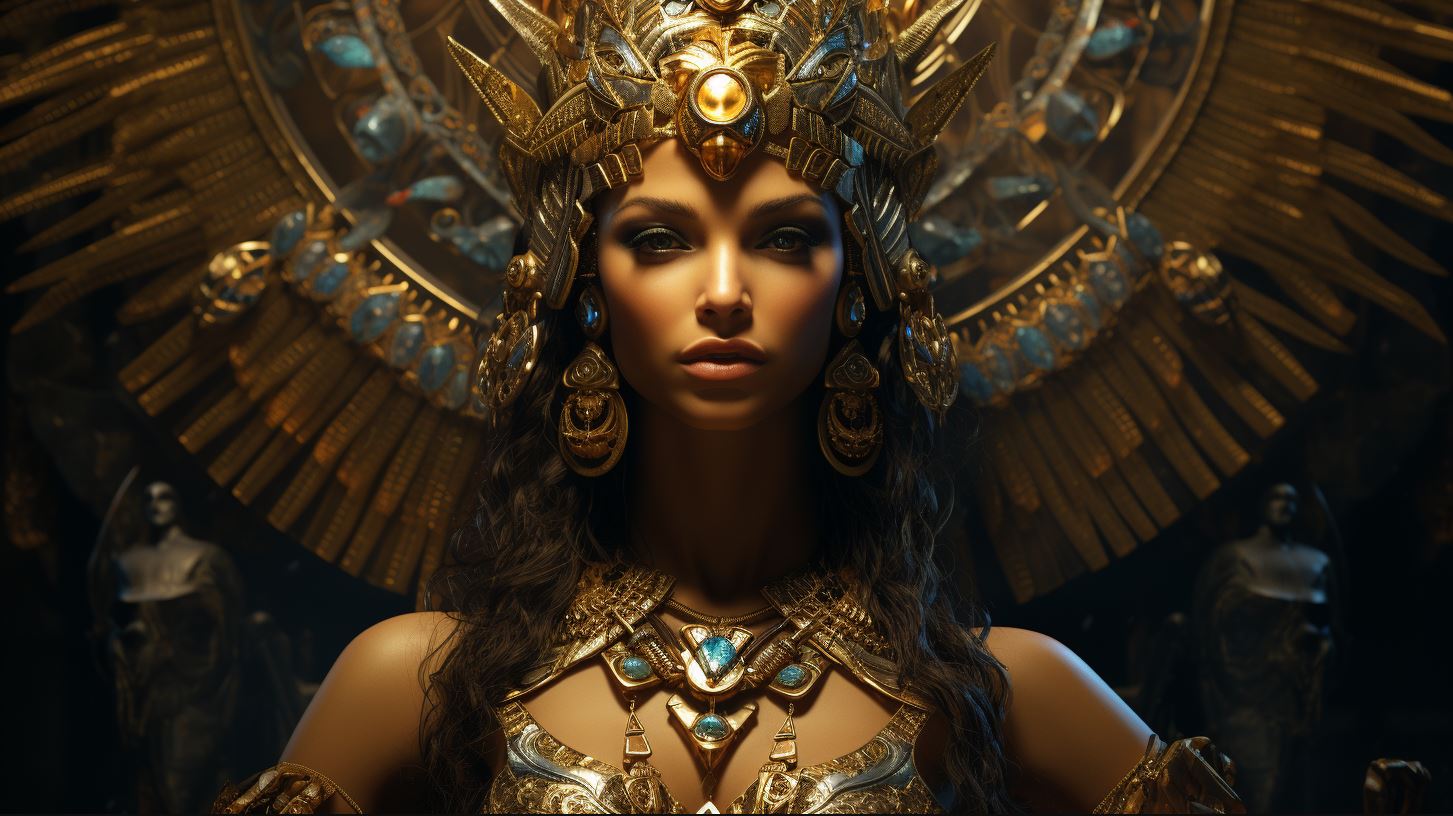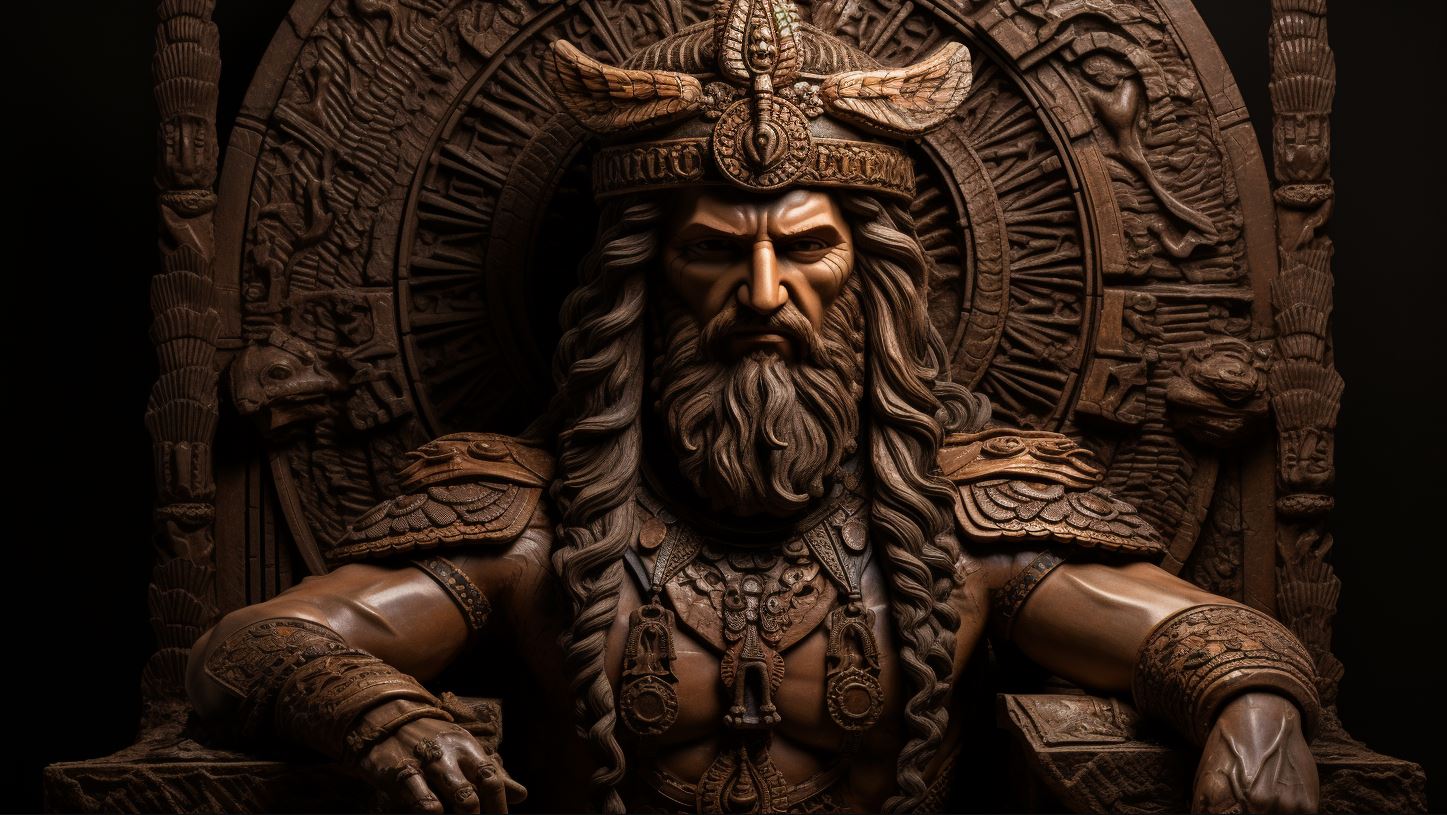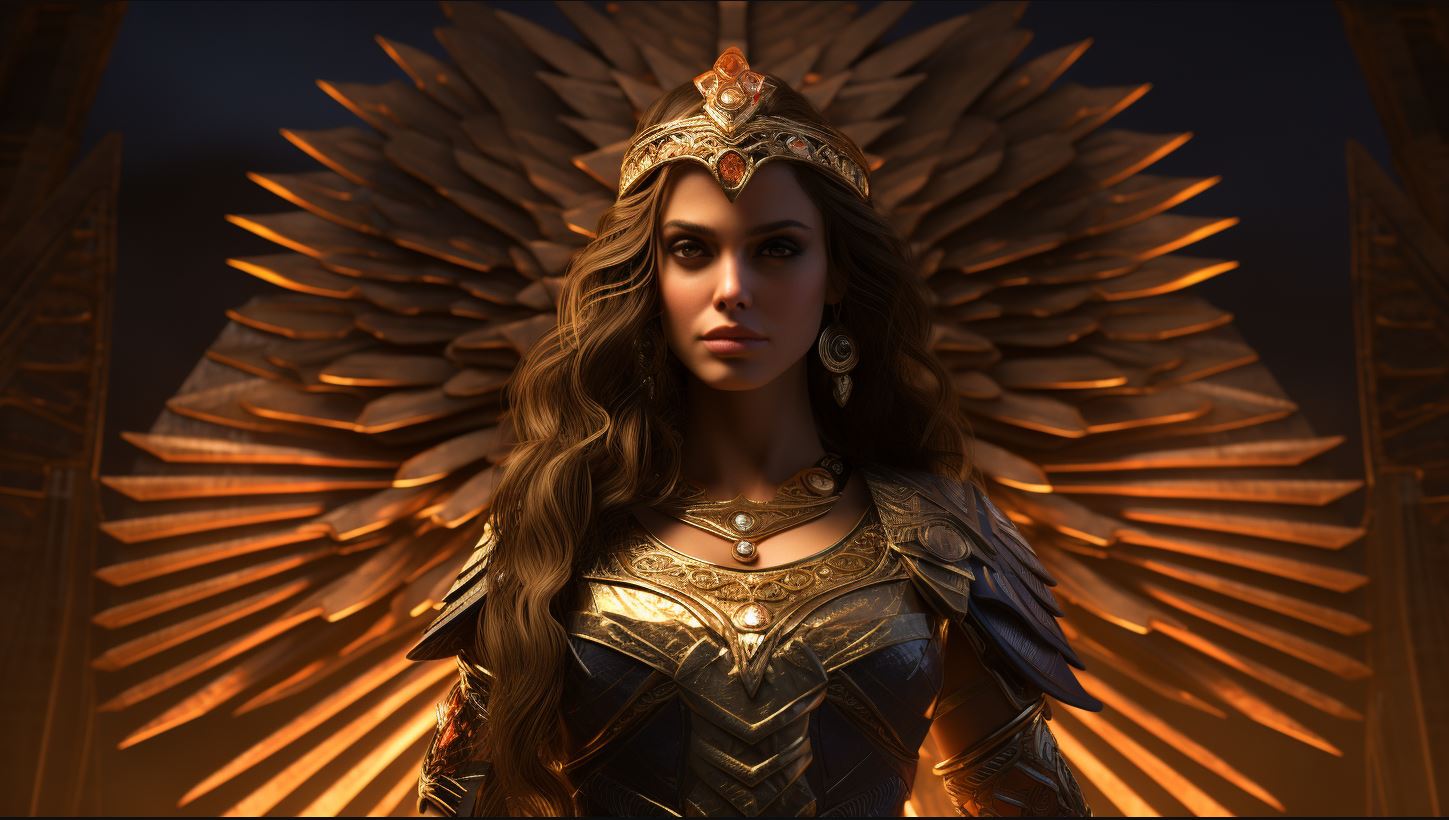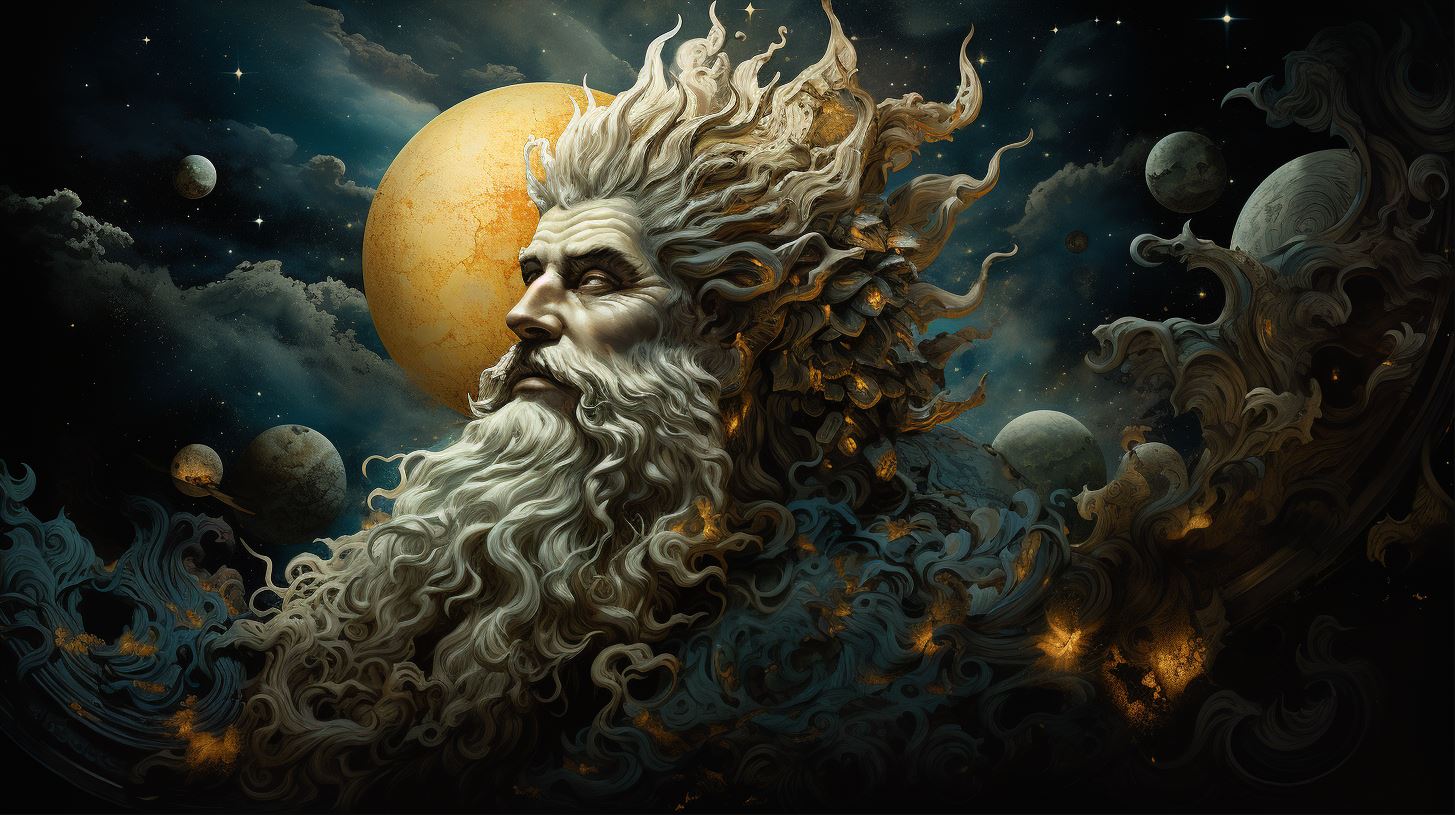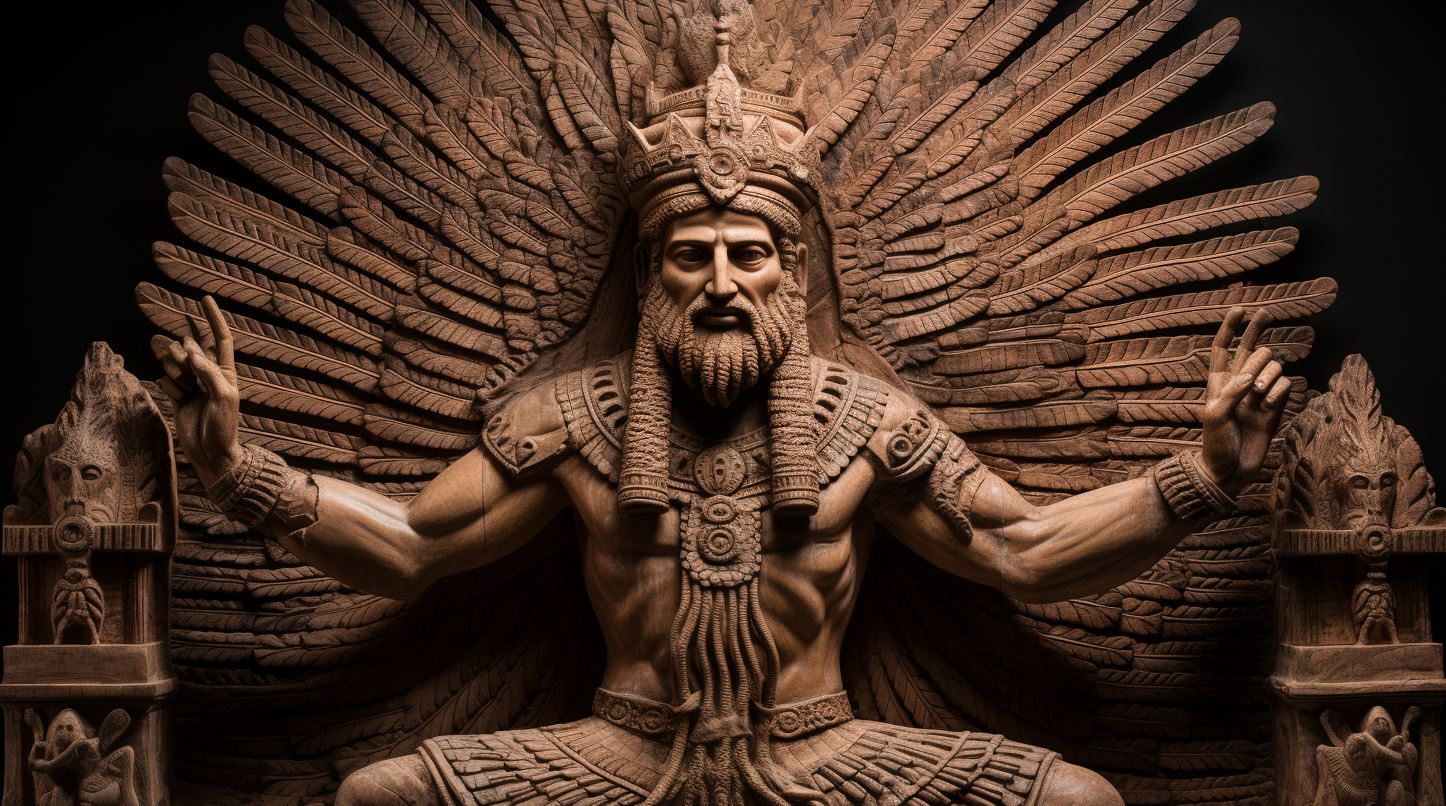Nammu Sumerian Goddess: Exploring the Mysterious Water Deity in Ancient Mesopotamia

The Sumerian goddess Nammu, associated with water, holds significant mythological importance in ancient Mesopotamia. Exploring her origins and role as the mother goddess sheds light on the creation myth and the mother-son relationship with Enki. The worship and rituals dedicated to Nammu reflect her influence in ancient Mesopotamian society, particularly in the city of Eridu.
Comparisons with the Babylonian counterpart Tiamat reveal intriguing similarities and differences. Written texts provide references and portrayals of Nammu, showcasing her enduring legacy in the Mesopotamian pantheon.
The Sumerian Goddess Nammu and Her Mythological Significance
Nammu, the enigmatic Sumerian goddess, holds immense mythological importance in ancient Mesopotamia.
Revered for her association with water, whether fresh or saline, she remains an elusive figure whose character emanates mystery. Considered the mother of Enki and sometimes regarded as the wife of Anu, Nammu’s divinity was venerated in a temple in Ur during the ancient Babylonian era.
References to her also surface in texts from Nippur and Babylon.
The Mesopotamians invoked Nammu in various scenarios, be it for purifying and consecrating objects or combating demons, diseases, and scorpions. Multiple epithets emphasize her role as the creator of gods and the world, signifying her significance as a divine figure.
Creating a stark contrast, her Babylonian counterpart, Tiamat, birthed the first generation of gods but engaged in conflict that ultimately led to her demise at the hands of Marduk, with her body then shaping the world.
The Origins of Nammu: Exploring the Mesopotamian Creation Myth
In Mesopotamian mythology, Nammu holds a significant role in the creation of the world. According to ancient texts, Nammu is hailed as the primordial mother goddess who birthed the cosmos and all the gods.
She represents the primal waters, the source of life and creation. The myths portray Nammu as the progenitor of the divine pantheon, bringing forth the major gods and eventually the human race.
The Mesopotamian creation myth highlights Nammu’s creative power, as she shapes the universe from the chaotic waters. Her divine essence pervades the cosmos, birthing the gods who each fulfill their respective roles in the divine hierarchy.
The mythic narrative emphasizes the vital role played by Nammu in establishing order and establishing the foundations of existence.
As the mother of Enki, the god of wisdom and water, Nammu’s connection to the creation myth showcases the profound influence she held over the pantheon.
Her divine lineage and contribution to the cosmic balance solidify her status as a revered deity in Mesopotamian culture.
- Iconic figure of Mesopotamian creation myth.
- Primordial mother goddess who birthed the cosmos and gods.
- Serves as the source of life and creative energy.
- Shaper of the universe from the chaotic waters.
- Progenitor of both gods and humanity.
- Connection to Enki, the god of wisdom and water.
Nammu and Enki: The Mother-Son Relationship in Sumerian Mythology
In Sumerian mythology, Nammu is revered as the mother of the gods, and her relationship with Enki holds great significance.
As a primordial deity, Nammu gave birth to Enki, the god of wisdom and water. Their bond not only symbolized the eternal cycle of creation but also showcased the importance of lineage and divine succession in Sumerian culture.
The mother-son relationship between Nammu and Enki played a crucial role in the cosmogony and the divine hierarchy. Nammu’s status as the mother goddess and Enki’s role as a prominent deity highlight their interconnectedness and the pivotal role they played in shaping the world.
Enki, often referred to as the most intelligent of the gods, relied on the wisdom imparted by his mother Nammu to fulfill his divine duties. This close connection between mother and son emphasized the essential nature of familial ties and the generational transfer of knowledge in Sumerian mythology.
The stories depicting their relationship further reveal the complex dynamics between gods within the pantheon and their divine responsibilities. The divine attributes and powers passed down from Nammu to Enki demonstrate the reverence for ancestral lineage and the intertwining roles of deities in the Sumerian belief system.
Nammu as the Mother Goddess: Her Role in Ancient Mesopotamian Society
The ancient Mesopotamian society revered Nammu as the mother goddess, recognizing her crucial role in creation and fertility. As the divine mother of Enki and the source of all life, she held a prominent position in their mythology.
Nammu’s significance extended beyond the realm of mythology, permeating various aspects of daily life in ancient Mesopotamia. She was seen as the nurturing force that brought forth abundance, ensuring prosperous harvests and bountiful livestock.
Her association with water accentuated her role as a provider of sustenance and fertility.
Furthermore, Nammu’s maternal nature influenced societal structures. She was considered the ultimate protector of families, bestowing blessings upon marriages and ensuring the well-being of children.
Her influence was deeply ingrained in the ancient Mesopotamian concept of family and social order.
The reverence for Nammu as the mother goddess was not limited to individual households. Communities recognized her power and sought her favor through rituals and offerings.
Temples dedicated to her embodying her divine presence were established in various cities, symbolizing the integral role she played in society.
Overall, Nammu’s portrayal as the mother goddess in ancient Mesopotamian society emphasized her essential role in creation, fertility, and family.
Her influence resonated deeply, pervading both mythological beliefs and everyday practices, leaving a lasting imprint on the lives of the people of that era.
The Cult of Nammu: Worship and Rituals Associated with the Water Deity
The worship of Nammu, the divine water goddess, held great significance in ancient Mesopotamian society.
She was revered for her role as the mother of the gods and the creator of the world. Devotees conducted various rituals to honor and seek the blessings of Nammu.
- Cleansing Rituals: Water played a central role in the worship of Nammu, as it symbolized her association with the primordial waters.
Devotees would cleanse themselves in sacred waters as an act of purification before engaging in worship.
- Offerings and Sacrifices: To show their devotion, worshippers would present offerings and sacrifices to Nammu.
These offerings could include food, flowers, precious objects, and symbolic representations of water.
- Prayers and Incantations: Through carefully crafted prayers and incantations, worshippers sought Nammu’s protection, guidance, and prosperity for themselves and their communities.
- Annual Festivals: Dedicated festivals were held in Nammu’s honor, bringing people together to celebrate and express their gratitude.
These festivals included processions, music, dance, and performances that highlighted Nammu’s role in the creation of the world.
The rituals associated with Nammu served as a means to establish a profound connection with the divine and to seek her favorable intervention in various aspects of life.
These practices reinforced the belief in Nammu’s power as the creator and nurturer of both gods and humans.
Nammu and Eridu: The Connection between the Goddess and the Ancient City
The city of Eridu held a special significance in the worship of Nammu, the Sumerian goddess associated with water and creation. As the patron deity of Eridu, Nammu’s influence stretched throughout the city, from its religious rituals to its daily life.
Eridu, located near the marshes of southern Mesopotamia, was believed to be the oldest city in the world and had a deep connection with water as a vital resource. Nammu’s association with the primordial waters made her an apt choice for the city’s divine protector.
- In religious ceremonies, Nammu was invoked to bless the waters and ensure their purity.
- As the goddess of fertility, she was also believed to bring abundance and prosperity to the land.
- Eridu’s temples were dedicated to Nammu, where priests and priestesses performed rituals and offered sacrifices in her honor.
Moreover, the city’s cosmological beliefs emphasized the role of water in the creation of the world.
Nammu was seen as the progenitor of not only the gods but also the entire cosmos, embodying the primordial waters that gave birth to all existence.
The connection between Nammu and Eridu showcased a strong symbiotic relationship.
Eridu relied on Nammu’s divine protection and guidance, while Nammu’s prominence as a creator goddess was reinforced through her association with the ancient city.
The Comparisons between Nammu and Tiamat: Examining Similarities and Differences
When exploring the ancient Mesopotamian pantheon, it is fascinating to analyze the similarities and differences between Nammu, the Sumerian goddess, and Tiamat, her Babylonian counterpart.
Both deities hold significant roles in creation myths and are considered primordial mothers, but their narratives diverge in crucial ways.
One notable similarity is that both Nammu and Tiamat are revered as the mothers of the gods, giving birth to the divine pantheon.
Their maternal nature symbolizes the life-giving force of water and its association with creation. However, their stories take different paths from here.
- Nammu is depicted as a nurturing and protective force, her motherhood representing the caring aspect of creation.
She is revered as the creator of Enki and plays a fundamental role in the establishment of the cosmos.
- Tiamat, on the other hand, is portrayed as a chaotic and destructive entity, resentful of her children, the gods.
She ultimately becomes an antagonist, leading to conflict and her eventual demise at the hands of Marduk.
These contrasting portrayals reflect the diverse perspectives on the primordial waters and their symbolic meanings in Sumerian and Babylonian myths.
While Nammu embodies the harmonious aspects of creation, Tiamat represents the tumultuous power that can arise from those same waters.
By examining the comparisons between Nammu and Tiamat, we gain a deeper understanding of the complex symbolism and mythological traditions of ancient Mesopotamia.
These powerful goddesses continue to fascinate and inspire us with their role in shaping the worldviews of our ancient ancestors.
Nammu in Written Texts: References and Depictions in Ancient Mesopotamian Literature
In ancient Mesopotamian literature, Nammu appears in various texts, providing us with valuable insights into her role and significance.
She is often mentioned as the primordial mother goddess and creator of the gods and the world. One such text is the myth ‘Enki and Ninmah’, where Nammu is depicted as the original mother who gave birth to the major deities and played a crucial role in the creation of humanity.
Additionally, Nammu’s association with water is highlighted in several hymns and prayers, emphasizing her divine power over the waters of both the sweet and salty variety. These texts portray her as a nurturing and protective figure, invoked for purification, consecration, and to combat various malevolent forces such as demons, diseases, and scorpions.
Although there is limited information regarding specific temples or cults dedicated to Nammu, her influence is evident in the ancient Mesopotamian society. The mere mention of her name holds great reverence, as seen in the case of Ur-Nammu, the founder of the Third Dynasty of Ur, who named himself after her.
While visual representations of Nammu remain elusive, her presence in written texts solidifies her status as a prominent and revered deity in the ancient Mesopotamian pantheon.
Nammu’s Legacy: Influence and Importance in the Ancient Mesopotamian Pantheon
Nammu, the Sumerian goddess associated with water and creation, left a lasting impact on the ancient Mesopotamian pantheon.
Revered as the mother of Enki and the creator of gods and the world, her legacy endures through various references and depictions in ancient Mesopotamian literature and inscriptions.
Throughout ancient Mesopotamian society, Nammu held significance as the primal source, embodying the primordial waters that birthed existence.
Her role as the mother goddess and creator deity resonated deeply with the people, symbolizing the power of life and the establishment of order.
- Her influence extended beyond mythological narratives and permeated religious practices where she was invoked for purification, consecration, and protection against demons and illnesses.
- Her connection to the city of Eridu also cemented her importance, as she was revered as the patron deity of the ancient city.
- Even though the extent of her cult remains uncertain, Nammu’s existence is evident through inscriptions and references across Mesopotamian history, highlighting her esteemed status within the pantheon.
- Her name lives on as she inspired the naming of influential figures like Ur-Nammu, the founder of the Third Dynasty of Ur, showcasing her lasting legacy and impact.
Overall, Nammu’s influence and significance in the ancient Mesopotamian pantheon cannot be understated.
Through her association with creation and her revered position as the mother goddess, she left an indelible mark on the religious and cultural beliefs of the region for generations to come.
.












